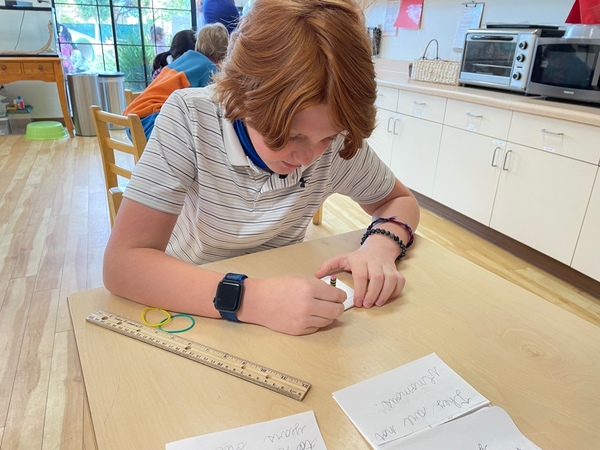(858) 759-0631
The elementary-aged child is driven to work with others. We see this all day in the classroom, even with solitary activities such as reading. Children will sit and work in groups of two to four and sometimes more. You may have seen this at home as an increased desire to see friends outside of school or to play with one or more other children. This drive to be with peers is vital to their development and makes for beautiful work.
Children of this age almost flock together and move in small groups. Montessori called this the group instinct or home. They are driven to form small groups. In these small groups, they mimic mini societies, sometimes creating their own rules, codes, languages, games, customs, and handshakes. But, in these small groups, they also learn how to collaborate, disagree, compromise, resolve conflicts, empathize, and communicate clearly and efficiently--all vital skills needed to navigate our cultures. Their group instinct serves to direct them toward learning all of these skills. And so, adults need to support that instinct and work! We spend a lot of time in the classroom on all that etiquette; try skipping over it, and the classroom will not function productively!
One of the unique aspects of the Montessori elementary environment is the crossover among subjects. For example, students have been filling pages of graph paper with addition, subtraction, and multiplication problems and then decorating the empty spaces with geometric shapes and colorful designs. Children almost always decorate the interior space in their fraction work, exploring colors and patterns. As the children beautify their work, they strengthen their hands and writing endurance and exercise their creativity and some mindfulness work.
Because subjects are not separated in the environment, we also see how lessons in one subject influence work in other areas. For example, here we see how a geometry lesson on triangles may have inspired one student to decorate their work journal with concentric triangles and another to design their bookmark with that polygon. We also see how that love of art and design influenced the design of those triangles from that earlier lesson.
Another aspect of work in the elementary classroom is the methods used for accountability, responsibility, and independence. One of the ways the elementary guide, or teacher, helps foster the development of these qualities is by encouraging and expecting the use of work journals. Each day, children record the date and the work or lessons of the day. This helps them see how they spend their time each day. It also encourages a balance of work choices and practice of past lessons. When a child is unsure of what to work on, our first question is, "Hm, have you checked your work journal to see which lesson you could practice?" or "Is there any work you see in your journal that you started and didn't finish or haven't practiced in a while?"
Children take great pride in their journals; they don't like to see their journals on the floor of the classroom, and when I asked them to "submit" the work they are most proud of this year, many of the children submitted their work journals to be shared with you all. Each cover is unique; some begin decorating each day's date, and many enjoy flipping back to see how their handwriting has improved.
-Millipede Teacher

